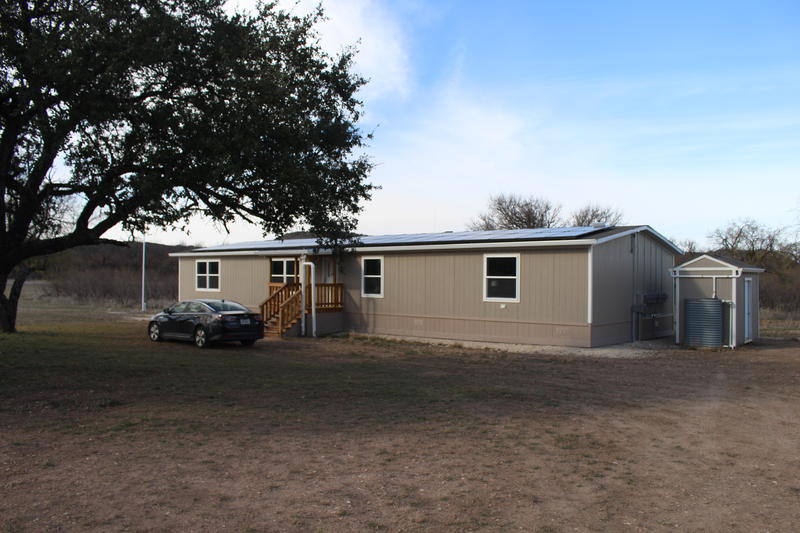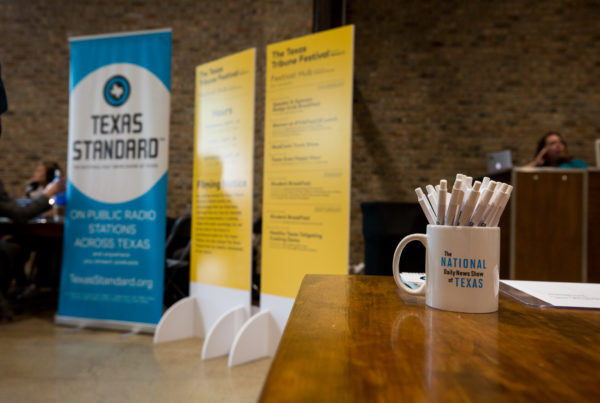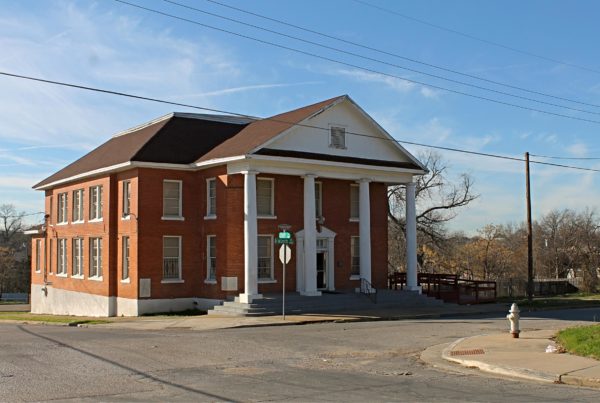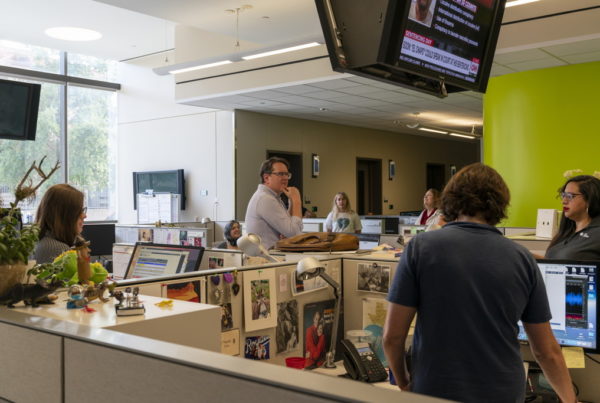From Texas Public Radio:
On the banks of the Llano River, just south of Junction, Texas, amongst the cactus and mesquite trees sits a house that researchers hope will change the face of conservation.
Atmospheric scientist Brian Ancell walked along the edge of this mesquite field. He walked past a small wind turbine, past a beige double wide prefabricated home with a solar array and around the corner to a central piece of his experiment: a 10,000 gallon water tank filled with rainwater.
“This is the water tank,” he said, pointing to the round tin enclosure. “A pressure sensor sits on the bottom and knows how much water is sitting on top of it. That data goes to the cloud.”
He bent over and turned on the spigot of a smaller tank. Water poured out onto the dry, loamy soil.
“The reason we are focused on water is because water is one resource that can go away. The wind will always blow, and the sun will shine,” Ancell said.
He and his co-investigators want to change people’s conservation behavior, how they build communities and how they live.
“We’re engineering a social change,” said Carol Lindquist, Texas Tech University associate professor of sociology and one of five co-investigators on the HUMS project (Home Utility Management System), which draws on disciplines ranging from social science to engineering to atmospheric science.
They will do it with a spacious four-bedroom house, built by San Antonio startup Braustin Mobile Homes.
It looks like something you’d find on Airbnb under the post heading “Cabin in the country” or “You’ll love this quaint rural gem,” with descriptors like “off the beaten trail.”
Despite a nondescript exterior and isolated surroundings — it’s located on Texas Tech’s Llano Field Station — it will have something none of those other houses have: a smart-home system that monitors every drop of water and every watt of electricity, and then it tells you how to use it.
It’s something that doesn’t currently exist in regular homes.
Lindquist said to influence people’s behavior, the end of the month water bill isn’t enough. People have to see their use in real-time.
Subjects living here will know exactly how much water they have in their tanks, how they’re using it, how much rain is coming and, most importantly, suggestions on how to make the water last.
For instance, if there is no rain is in the forecast, the system will tell you, “Hey, run the dishwasher every three days instead of every day, and you may need to shower every other day.”
“And you say, ‘Ah man, it’s hot, it’s summer, it’s Texas. I want to shower every day,’” Lindquist said.
Users then have to decide to either make the sacrifice or risk running out and getting water from the grid.
“So you can accept some of the recommendations and reject others. And I think that’s the key,” she said. “You don’t have to be conserving. You can choose to be conserving.”
















